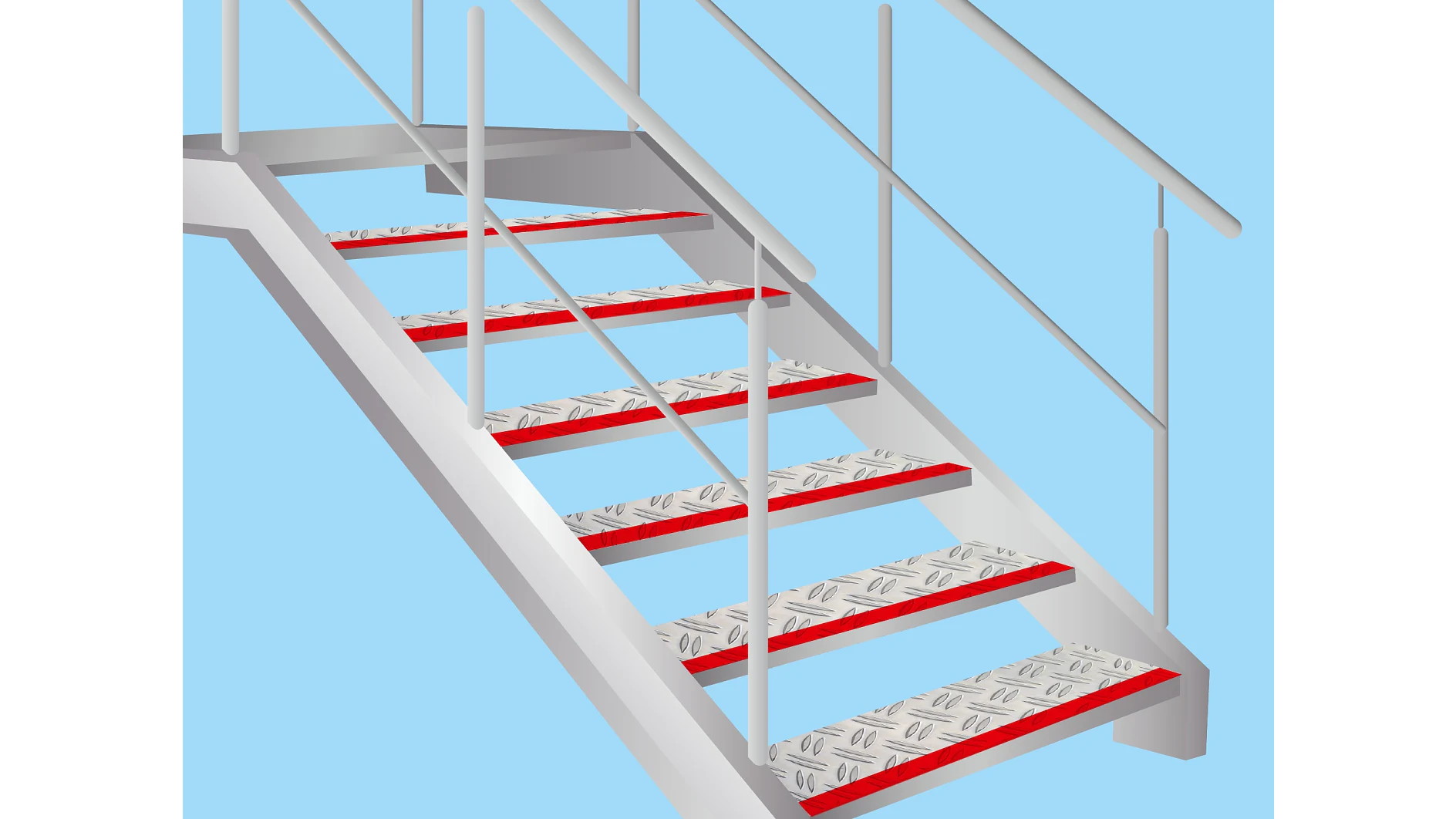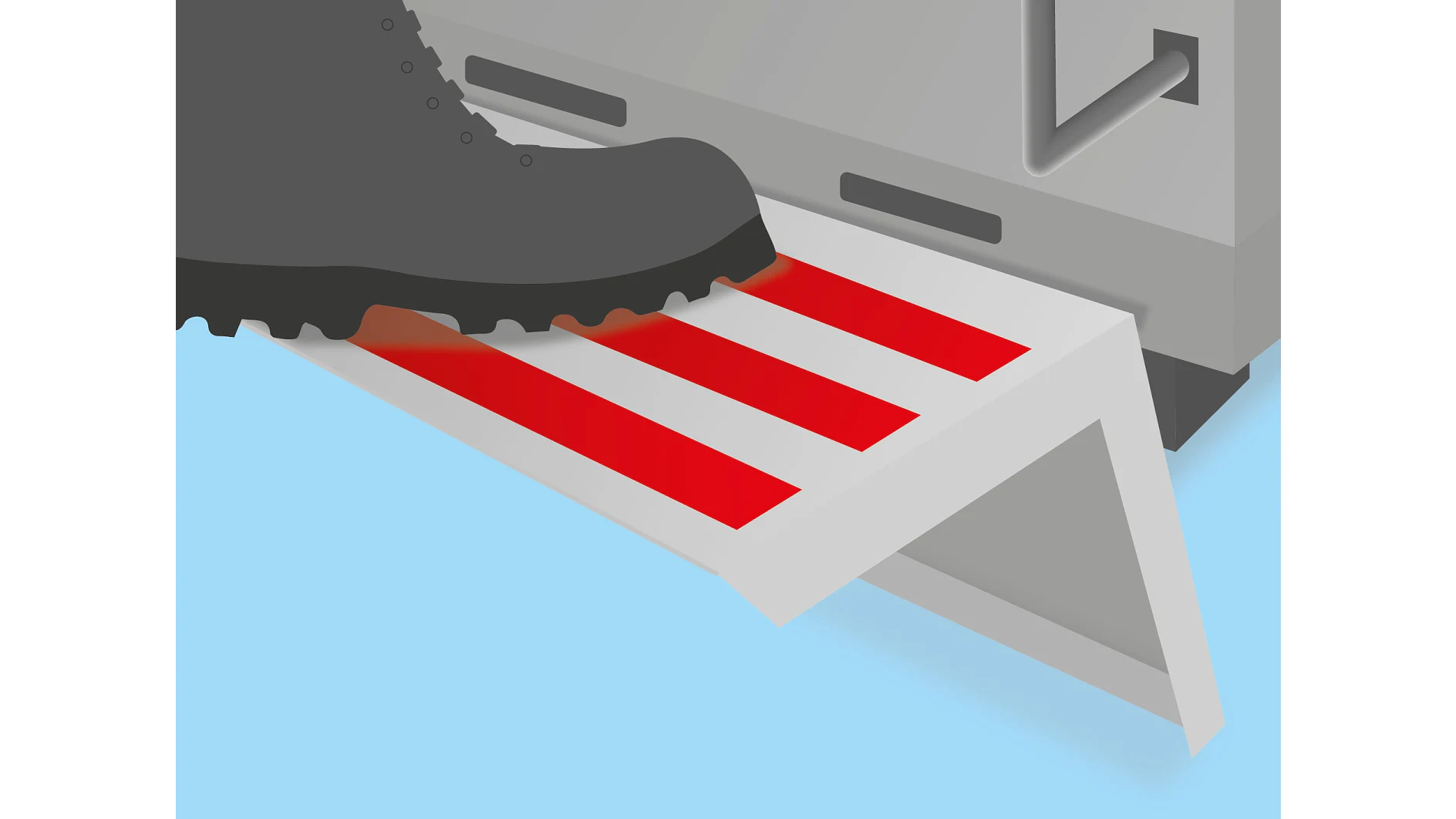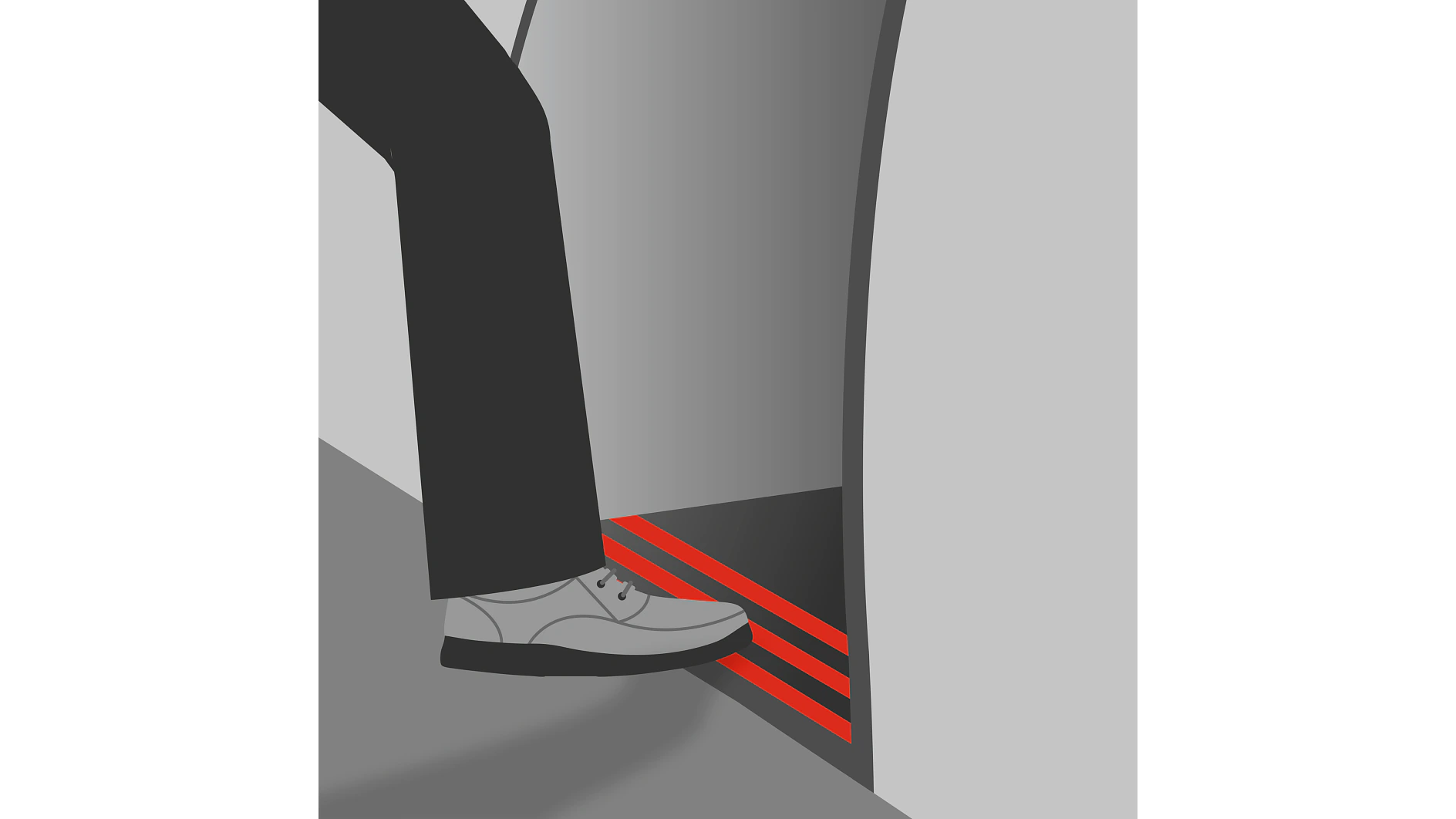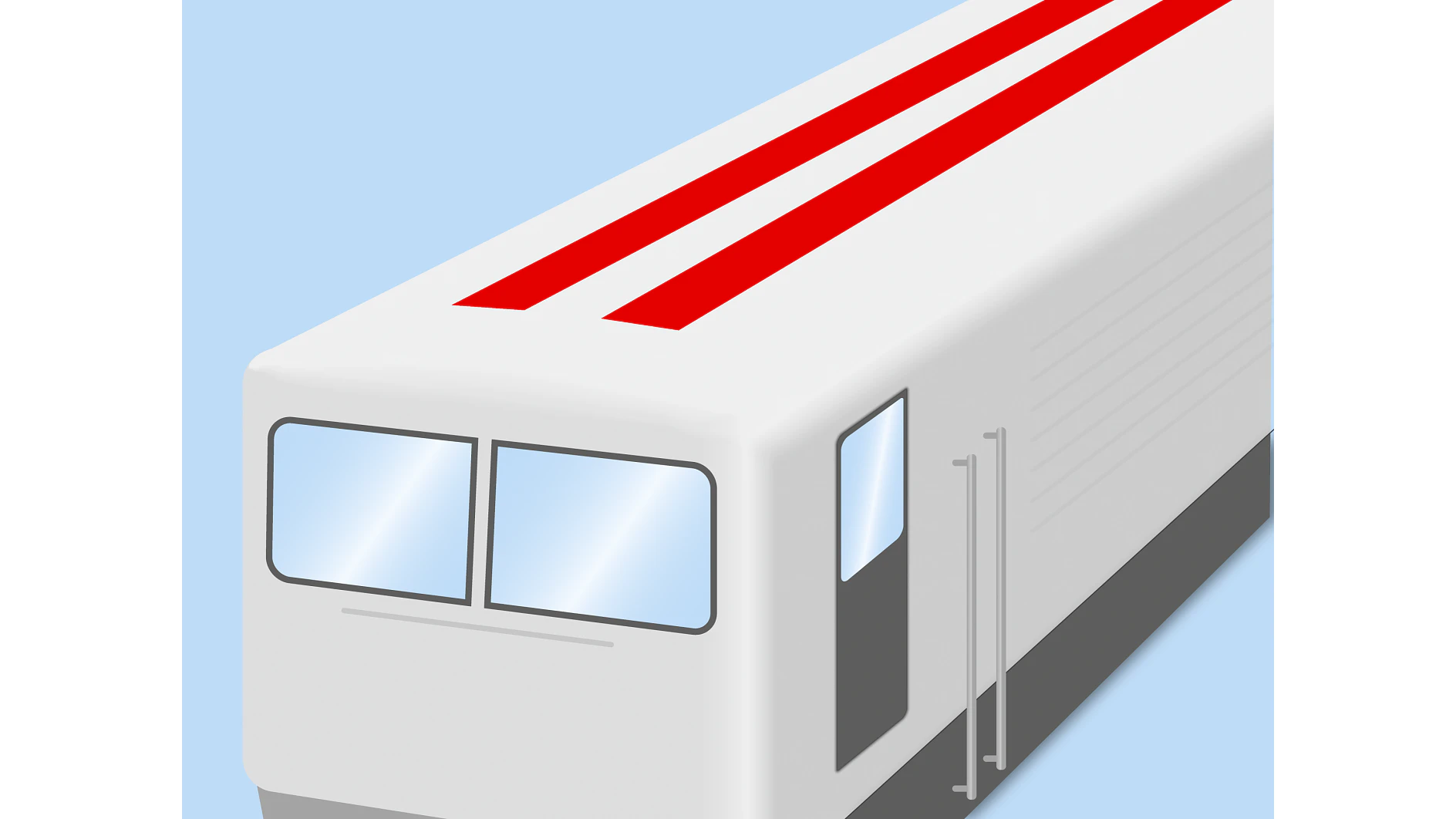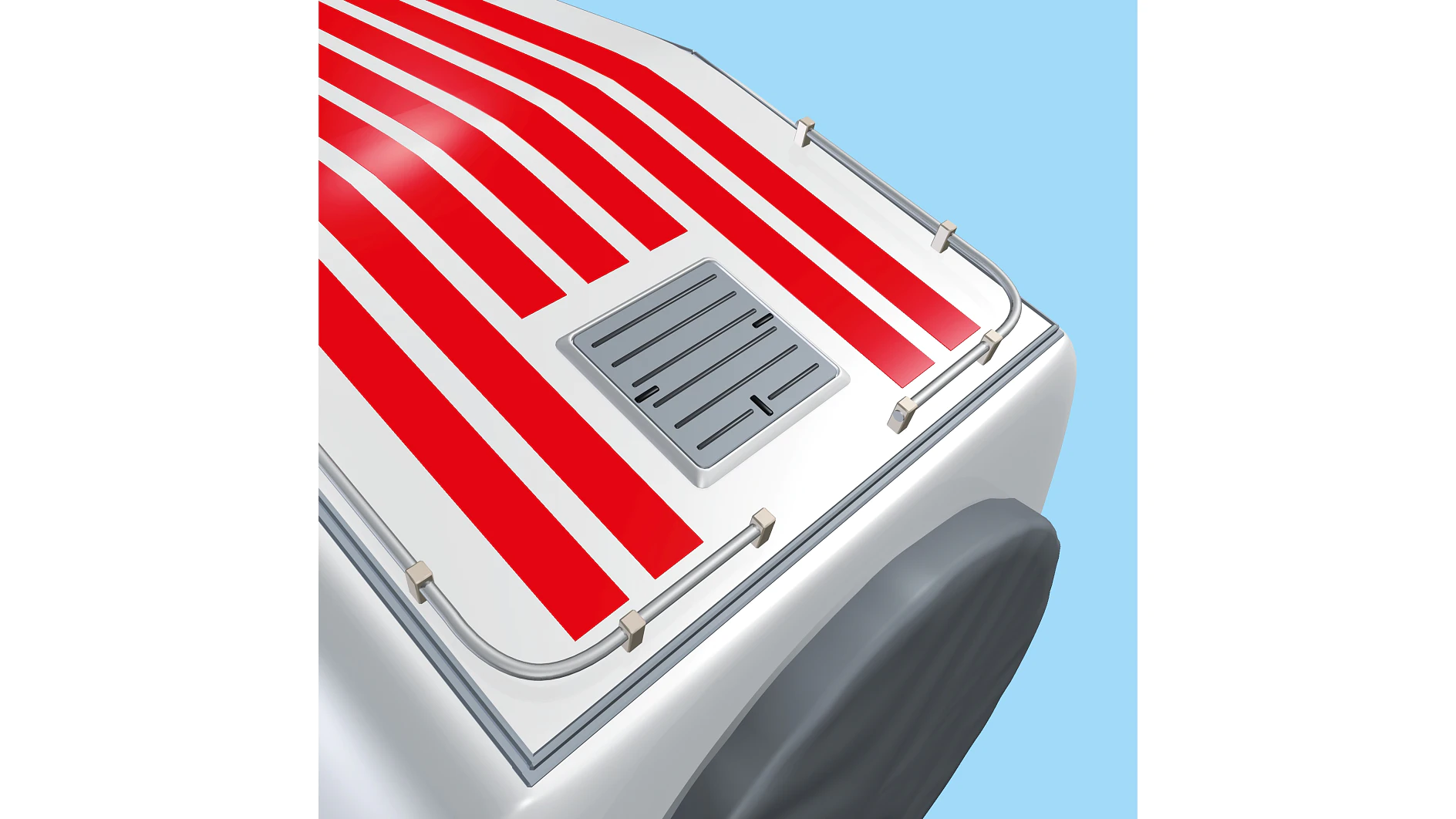
Anti-slip adhesive tape
for industry
Avoid potential injuries and accidents in the workplace with our anti-slip industrial tapes. Factories and warehouses can be hazardous places, with slips, trips and falls among the most reported incidents. Anti-slip tapes are a simple, effective way to prevent incidents and enhance your workplace safety.
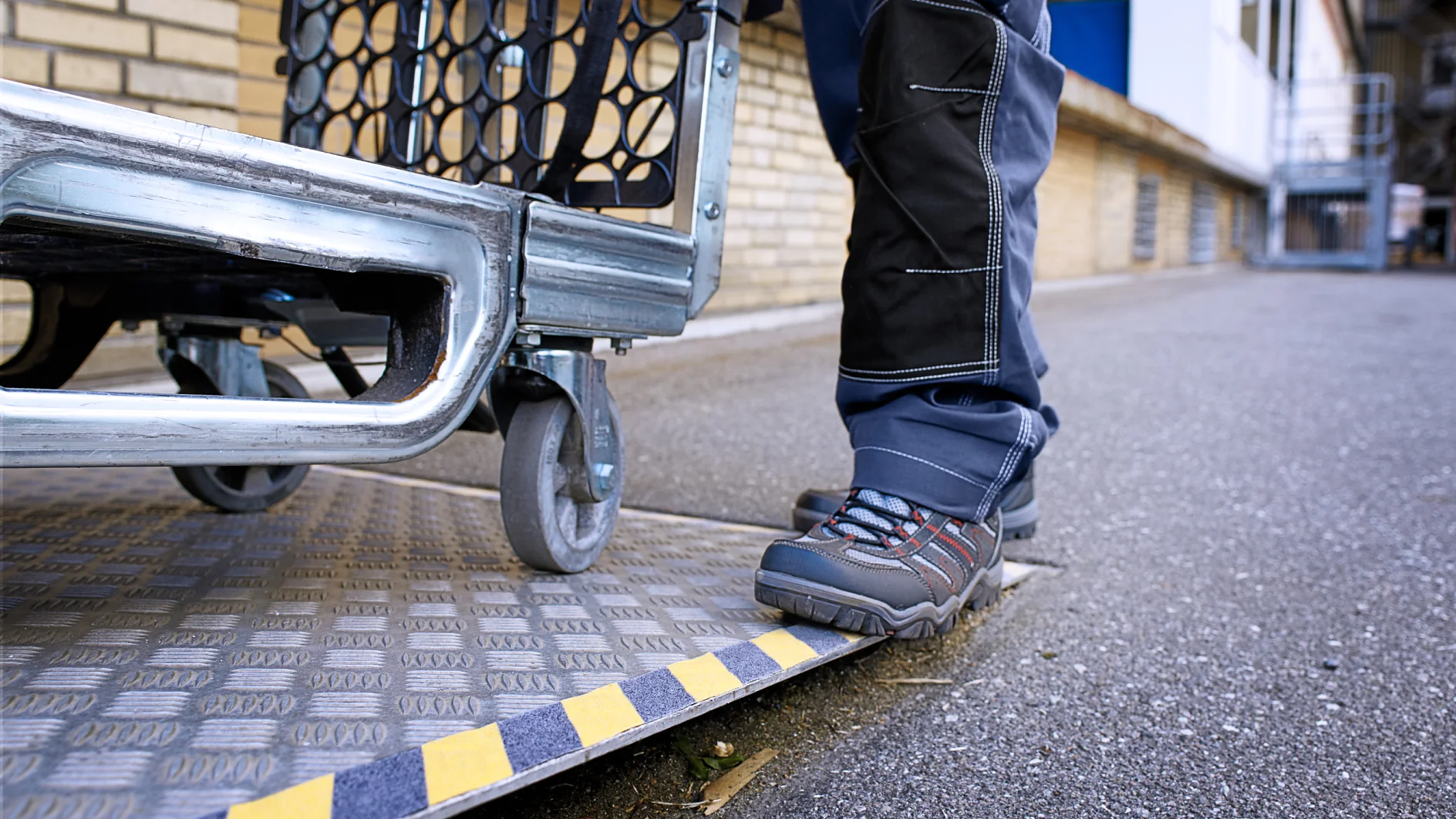
Anti-slip adhesive tapes have a textured surface that increases traction to give a secure grip underfoot. The strong acrylic adhesive creates a secure bond with the underlying surface to ensure the tapes stay in position. Non-slip tapes are widely used where safe footing is needed, such as in manufacturing, transportation, and maintenance environments on walkways, roofs, ramps, platforms, and steps.
Explore tesa’s portfolio of anti-slip tapes suitable for indoor and outdoor use. We supply standard, heavy duty, extra-conformable, fluorescent, and high-visibility anti-slip tapes. If you require help in choosing the best product, our experts can help.
Key features of our industrial anti-slip tapes
Typical applications for anti-slip adhesive tape
Anti-slip adhesive tapes are widely used to enhance safety in industrial environments, such as manufacturing and packaging areas, warehouses, and transportation and logistics settings.
They are used as a simple and reliable way to provide safe footing to prevent slips, trips and falls in the workplace, including:
- Walkways
- Platforms
- Loading ramps
- Ladders
- Tread plates
Reliable adhesion, durability, and ease of use make them a versatile and cost-effective option.
Choosing the right anti-slip tape from the our assortment
Standard anti-slip tapes: Effective for most general industry applications
Our standard PVC tapes are coated with aluminum oxide particles and acrylic adhesive. These tapes are a popular choice for general industrial use, both indoors and outdoors. They will provide reliable adhesion for up to two years on many surfaces for a secure underfoot grip.
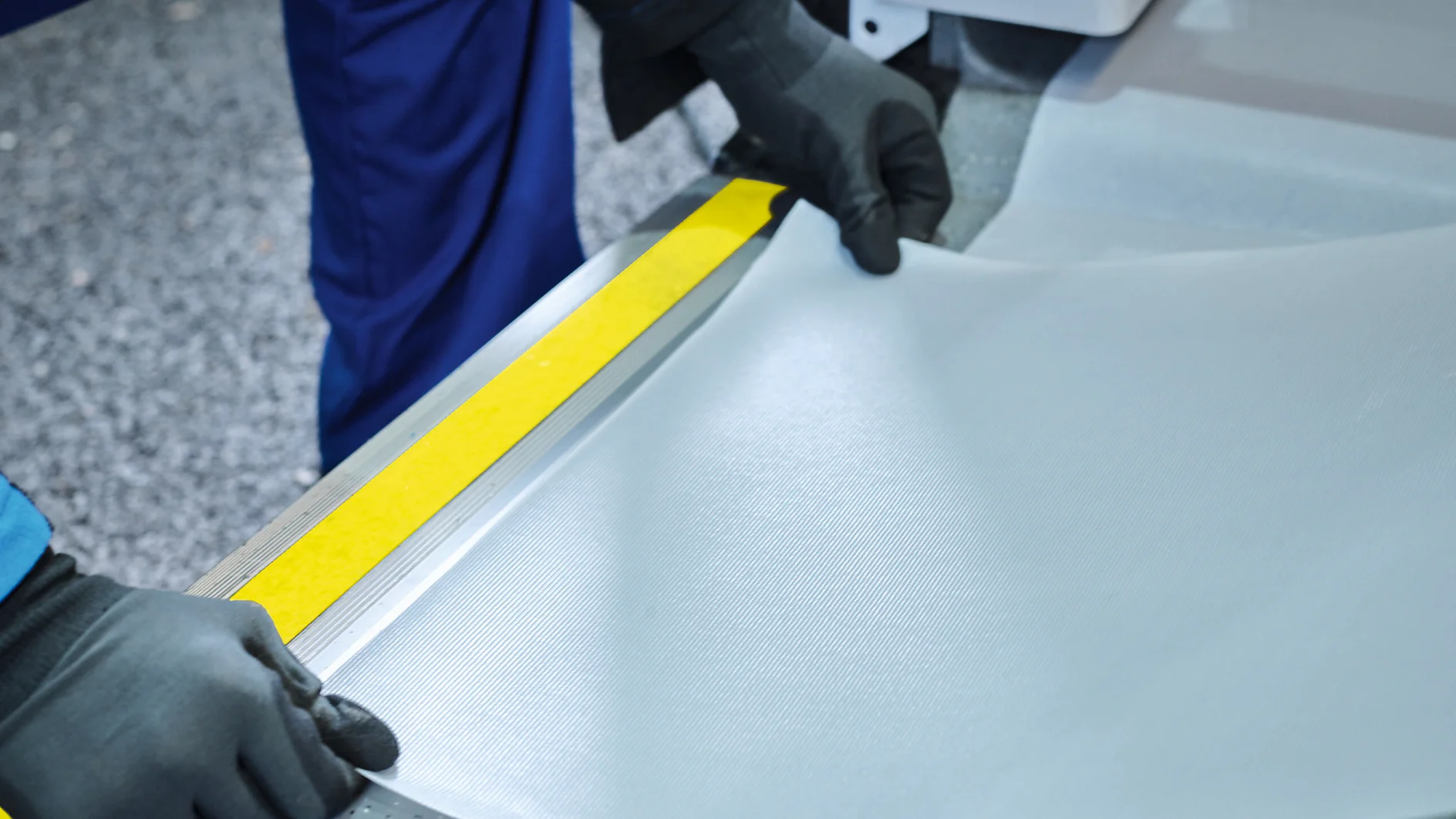
- Acrylic adhesive provides strong adhesion on many surfaces. They are resistant to humidity, water (including salt water), chemicals, and UV, making them suitable for use in- and outdoors.
- Resistant from 14 °F to 122 °F (-10 to +50 degrees Celsius) to withstand changes in internal or external temperatures.
- Suitable for hand tearing and die cutting for versatility in manual and automated applications.
- Choice of colors combined with anti-slip properties for high-visibility and unobtrusive anti-slip protection: High-visibility black and yellow hazard tape clearly identifies potentially dangerous areas and provides extra grip where needed. Transparent tapes can be used where unobtrusive anti-slip protection is needed to enhance safety without compromising visibility, such as maintenance areas.
- Fluorescent tapes provide grip and are visible in dark or low light conditions, power outages and emergencies.
- Certified slip resistant R13 (R12 for black-yellow tape) according to DIN51130.
- Anti-slip floor protection film provides transparent, robust protection against dust and abrasion. It safeguards floors and gives a better grip underfoot in manufacturing, transportation, and marine industries.
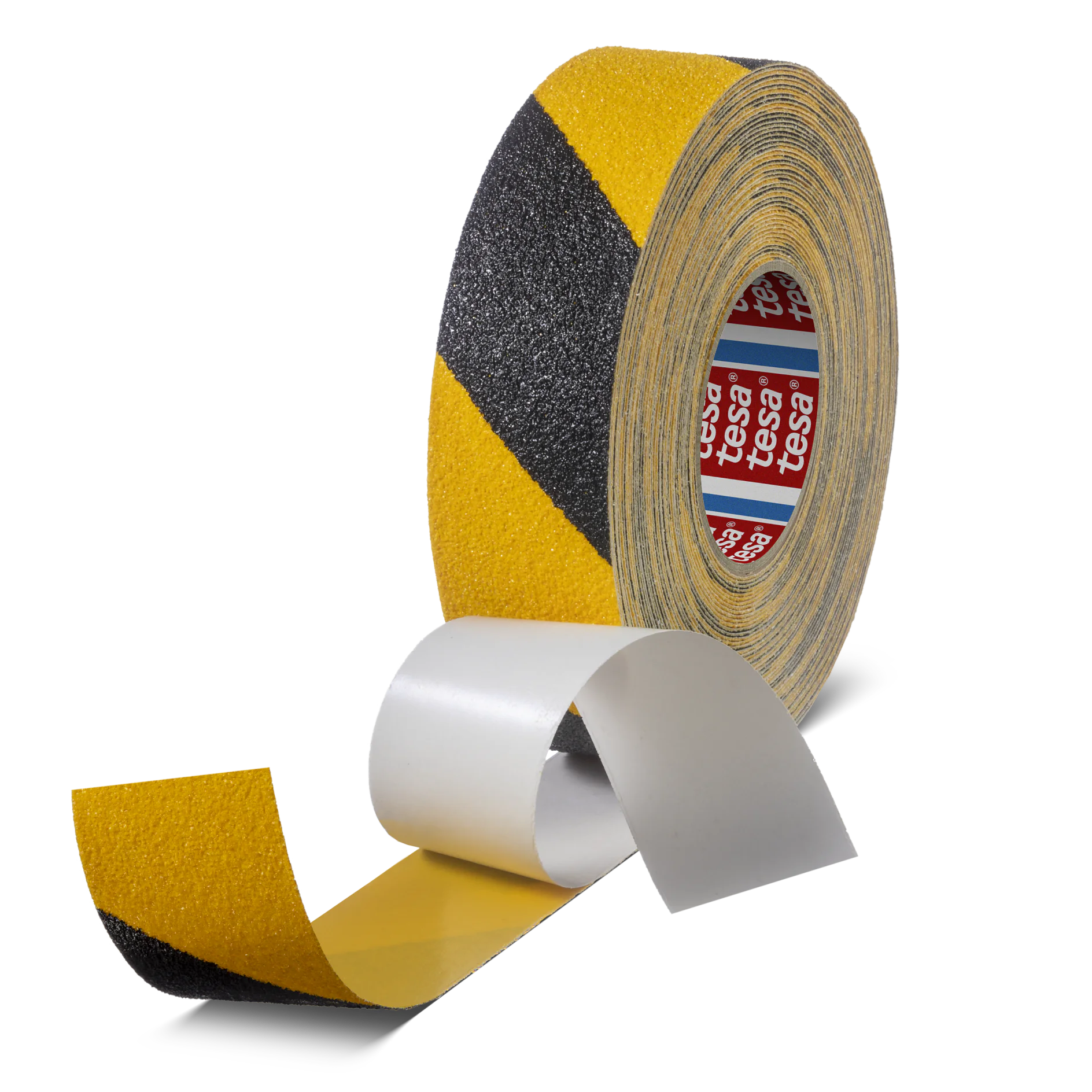
Heavy duty anti-slip tapes for harsh environments
A high-quality non-slip tape is created using PVC film coated with large mineral particles and acrylic adhesive. These products provide excellent bonding to most surfaces and extra slip resistance in harsh conditions.
- Extra durability for areas with very high traffic or movement of heavy machinery.
- Temperature resistant between 23 °F and 176 °F (-5 and +80 degrees Celsius).
- Coarse particles maintain traction, even in very muddy or challenging environments.
- Good chemical and weathering resistance.
- DIN51130 certified.
Highly conformable anti-slip tapes
The aluminum carrier with mineral particles and acrylic adhesive is highly conformable on irregular surfaces. It is suited to applications where high conformability is important, such as slip proofing tread plates, ladders and load ramps, and for covering rivet and screw heads in floor protection.
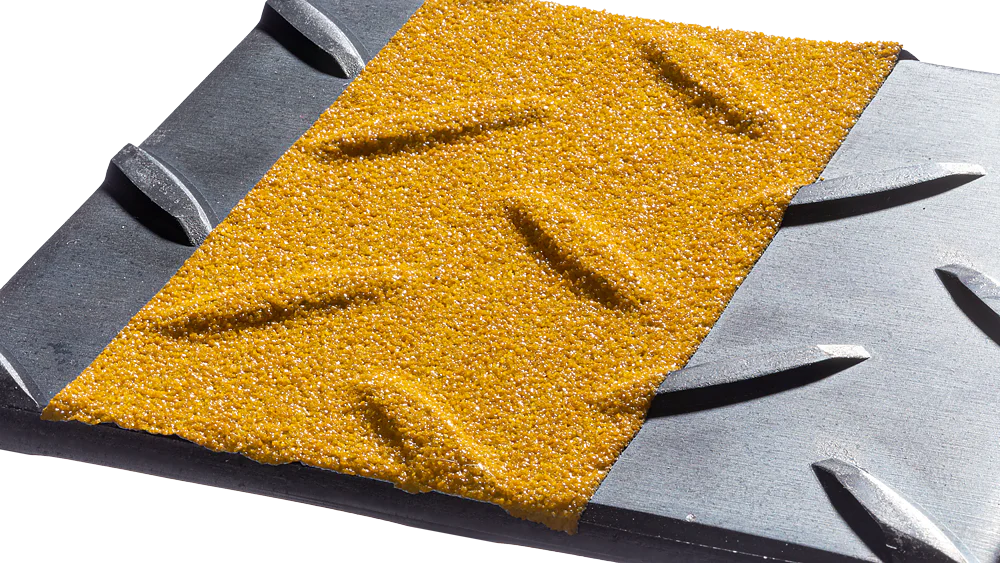
- Acrylic adhesive gives exceptional bonding on most surfaces for versatile application.
- Exceptional conformability on irregular surfaces.
- Black and yellow tape can be used for highly visible marking of potential hazards in manufacturing and transportation settings.
- Good resistance to chemicals and weathering.
- Fluorescent tapes combine anti-skid properties with fluorescence to ensure safe footing and high visibility in dark or low light conditions, power outages and emergencies.
- DIN51130 certified.
Anti-slip tape for industrial use cases
Our anti-slip tapes are suited for applications in harsh environments including challenging manufacturing environments, but also marine and transportation. Find an overview of our anti-slip tape solutions below:
Are anti-slip tapes the same as grip tapes?
The terms anti-slip tape and grip tape are sometimes used interchangeably when it comes to industrial adhesive tapes, but they are, in fact, different.
Anti-slip tape improves safety by giving a more secure grip underfoot for people and equipment to avoid slips, skids, and accidents. It is most commonly used on floors, stairs, and access areas.
Grip tape (opens in a new window or tab) is used on machinery such as rollers during the production process. It improves the traction of materials such as films, paper, and textiles as they move through manufacture. Better control over these materials results in higher quality outputs and less waste.
